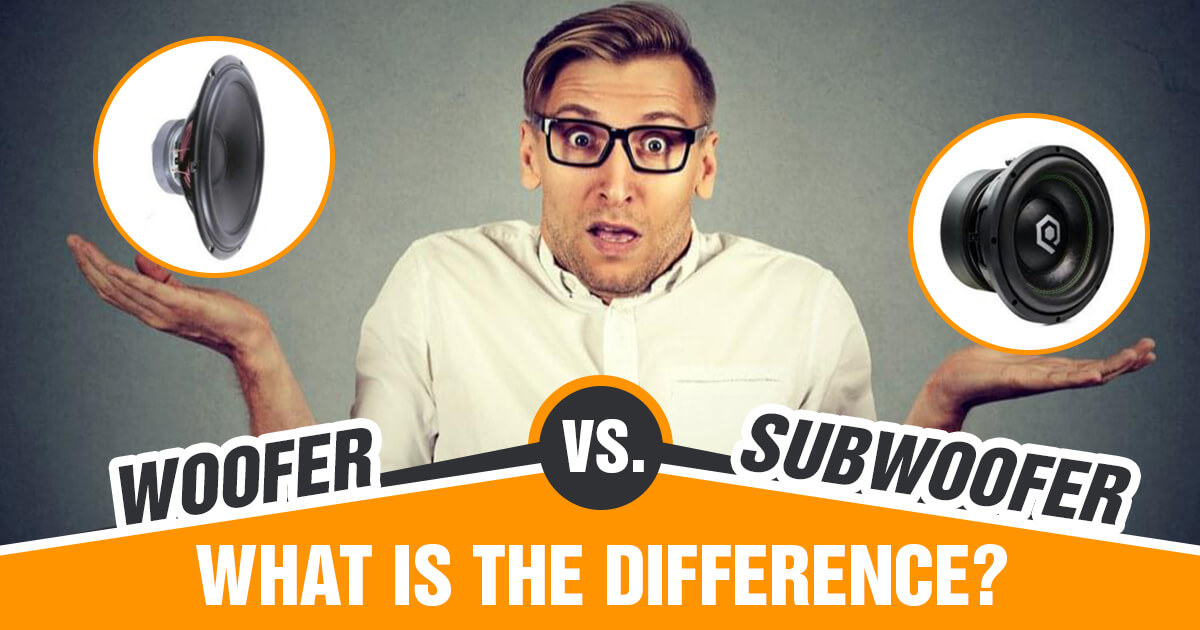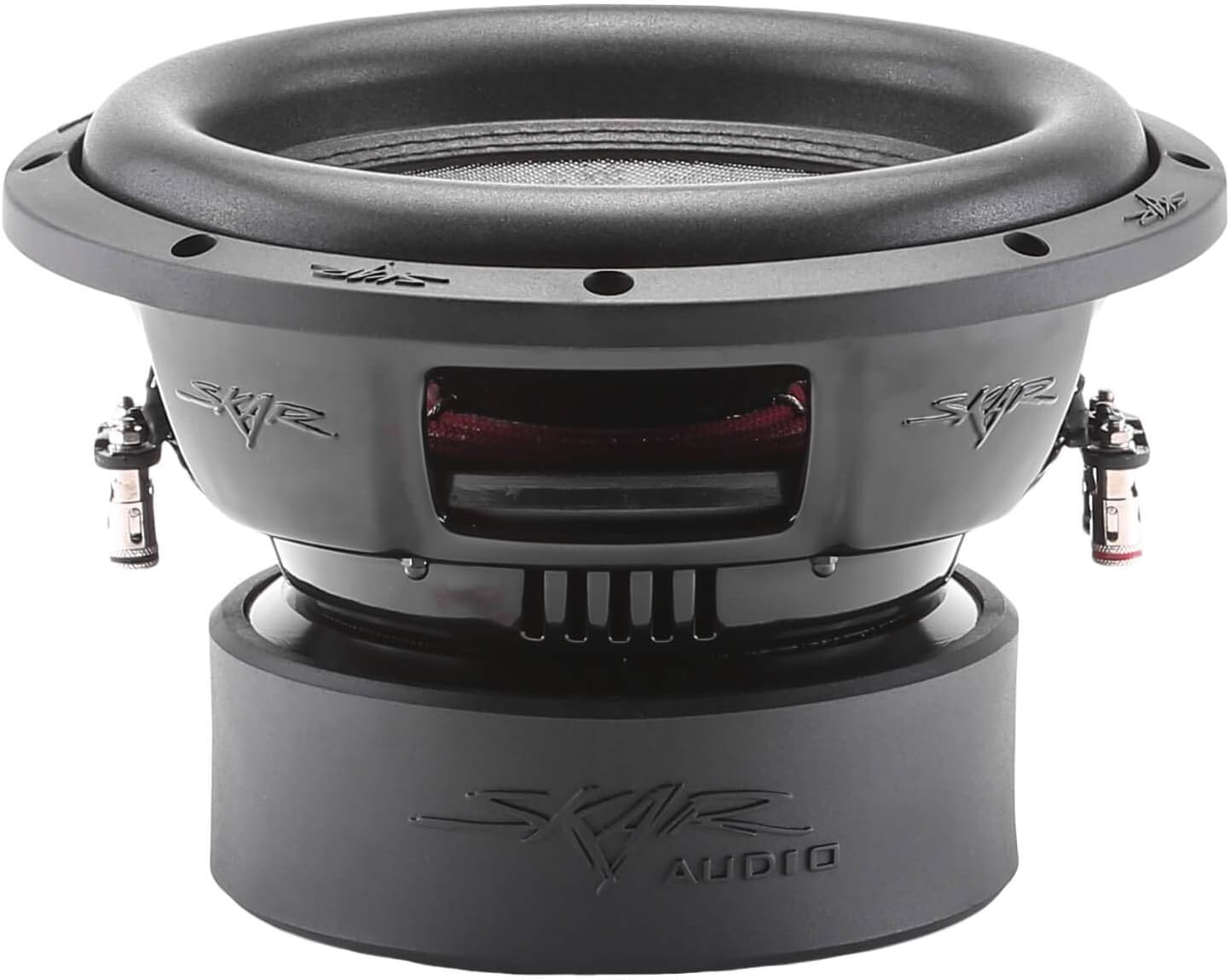You may come across a Difference Between Woofer And Subwoofer while putting together your sound setup.
Both can significantly improve sound quality, but they are not precisely the same.
Many people are oblivious to the differences and confuse them for the same device.
A woofer and a subwoofer both perform the same function, but they do so in different ways.
Both add depth to the sound by emphasizing low frequencies such as bass.
However, woofers have wide frequency ranges, making them a versatile option.
Subwoofers, on the other hand, specialize in frequencies that are lower than those of a woofer.
You might be unsure which of these two sound devices is best for your needs.
Below is a detailed woofer vs. subwoofer comparison to help you make your decision.
Woofer Vs Subwoofer Learn the Difference:
| Aspect | Woofer | Subwoofer |
|---|---|---|
| Frequency range | Typically covers 40 to 2500 Hz | Typically covers 20 Hz to 200 Hz |
| Size | Usually ranges from 4 inches to 15 inches in diameter | Usually larger than woofers, ranging from 8 inches to 21 inches |
| Power handling | Can handle a wide range of power depending on the model | Can handle more power than woofers, usually from 200W to 1000W |
| Placement | Can be used as standalone speakers or as part of a system | Typically used as part of a speaker system or a dedicated system |
| Sound quality | Can produce mid-range and low-end frequencies effectively | Focused on producing the lowest frequencies for deep bass |
| Price range | Generally less expensive than subwoofers | Generally more expensive than woofers |
In audio systems, a woofer is a loudspeaker that produces low-pitched audio frequencies, typically from 40 Hz to 400 Hz. A subwoofer is a loudspeaker that specializes in reproducing very low bass frequencies, typically below 80 Hz.
While both woofers and subwoofers are designed to produce low frequencies, the two devices are different in terms of their size, performance, and cost.
They are both Bass Sound Devices, So What’s the Difference?
Woofers and subwoofers are named for the “woof” sound they generate, similar to that of a dog.
The soundwaves they produce are in the low-frequency range, which is not something that ordinary speakers can handle.
Their vast size contributes to their ability to make low-frequency sounds.
Although they provide the same function as bass in a sound system, the similarities end there.
The sound output, drivers, amplifiers, and even power consumption of woofers and subwoofers are different.
Rather than bombarding you with too much information, we’ll go over the facts one by one.
Understanding Woofers and How They Work
Woofers are speakers that produce low-frequency sound waves across a broad spectrum.
They rarely stand alone as a powerful driver and frequently include more than one speaker.
In general, a woofer has the following characteristics:
- A broad frequency range of 40hz to 2500hz
- Have more than one driver
- Passive drivers
- Medium-sized drivers
A wide frequency range helps woofers work with various sounds, but that isn’t always desirable.
While woofers cover diverse sounds, they can’t deliver that earth-shattering bass level.
In a way, we could say that woofers are jacks of all trades but masters of none.
They often have a prominent speaker along with other smaller ones.
The woofer’s driver system is determined by the number of speakers, with two, three, and four-way driver systems available.
A tweeter is paired with the woofer in two-way systems, and a midrange driver is included in three-way driver systems.
Four-way driver systems also feature a super tweeter, which boosts the sound quality.
The tweeters and midrange drivers help grant woofers a wide range of frequencies.
Furthermore, the addition of these drivers helps create a more realistic sound.
Why does the size of the woofer itself matter?
The bigger they are, the lower the frequencies they can reach.
They are passive drivers that rely on the external amplifier of your setup.
This way, woofers work together with the rest of your sound devices to create high-quality audio.
What Makes Subwoofers Unique?
Subwoofers also take care of the bass in your setup but with a smaller low-frequency range.
You might think this narrow range is a bad thing, but it’s quite the opposite!
The low-frequency range of the subwoofer is shorter than that of woofers.
This range allows subwoofers to provide that earth-shattering bass people love.
When talking about the details of subwoofers, they usually look like this:
- A narrow frequency range of 20hz to 200hz
- Speaker with a single driver
- It can feature either passive or active subwoofers
- Large size driver
Woofers are versatile, as the multiple drivers allow them to stand alone as a sound system.
However, the small frequency range of subwoofers restricts them from focusing solely on bass.
Because they specialize in bass alone, they excel at it and provide better quality than woofers.
With bass as their core niche, subwoofers rely on the rest of your setup for the overall output.
Also Read: What Is A Shallow Mount Subwoofer
If you didn’t know, speakers need to push large amounts of air to create low frequencies.
This gets more efficient with large subwoofers.
That being said, even if they take ample space, that’s what allows them to reach low frequencies.
Moreover, unlike woofers, they don’t have additional drivers such as tweeters; thus, the subwoofer driver space is utilized.
You can find both passive and active subwoofer drivers, which might be tricky to handle at first.
Passive bass drivers are easier to use, as it’s as simple as plugging them with the rest of your setup.
Active subwoofers have their own amplifier rather than an external amplifier, which is excellent for knowledgeable audiophiles.
However, they also have a reasonably high price. But despite that, active subwoofers are more popular than passive sub.
Woofer vs. Subwoofer: Which One to Choose?

Their similarities might make it look like a difficult choice, but fortunately, it’s not!
The answer lies in the type of sound system you have: stereo or surround.
Woofers are ideal for stereo systems since they can work on their own to make high-quality audio.
On the other hand, subwoofers are perfect for surround systems.
Since subwoofers can’t work on their own, they significantly improve your existing sound setup.
While woofers can also compliment your sound setup well, their bass quality stays behind compared to subwoofers.
Therefore, audiophiles prefer using subwoofers because they can customize the sound output pretty well!
However, if you’re not knowledgeable about sound setups, passive drivers or even woofers are the better choices.
There’s some complicated science behind properly using amplifiers and sound mixers, after all.
To better understand the role of subwoofers, we’ll touch briefly on the topic of surround setups.
Also Read: Shallow Mount Subwoofer Vs Regular
What is a Surround Sound System, and Why Are Subwoofers Great With Them?
As the name implies, surround sound systems aim to make the sound come from various directions with various audio channels.
This technique grants immersion and provides a better audio experience overall.
Surround systems come in different number denominations, such as 3.0, 5.0, and 7.0.
The numbers might seem confusing, but all they mean is the number of speakers on your setup.
A Stereo setup or 2.0 features speakers on both sides, while a 3.0 (surround) includes an additional smaller speaker in between these two.
A 5.0 design adds two more speakers on each side, and 7.0 adds two more on the back.
As you can see, the speakers gradually surround you, hence the name!
The number denomination of sound systems can also look like 2.1, 3.1, and so on. The addition of the decimal “one” means there’s a subwoofer in the setup!
The subwoofer driver focuses on amplifying the bass, while the rest of the speakers cover a more comprehensive range of frequencies and directions.
The result is a highly immersive and memorable experience!
What Do Woofers and Subwoofers Look Like, and How Can You Tell Them Apart?
An easy way to tell if you’re looking at a woofer or subwoofer is by counting the number of drivers.
One key difference between woofers and subwoofers is that woofers also have tweeters (smaller speakers).
Subs don’t have any tweeters on them, but just the subwoofer driver.
Most woofers and subwoofers have a plastic or wooden enclosure.
But while all subwoofers have a bass reflex, not all woofers have them.
They look like a hole in the speaker’s casing, which may differ in diameter or shape.
Since speakers move back and forward, they send sound waves in both directions. They help handle the kickback and overall provide better quality sound.
Your typical woofers will include a tweeter and a mid-range speaker, along with the woofer speaker itself.
But sometimes they might consist of a bass reflex too.
Subwoofers, in particular, tend to have a square shape since they usually work best in the corner of a room.
However, there are some fancy designs out there, too, such as cylinders!
Also Read: Is a subwoofer a speaker necessary?
Which of Them Is Hungry for Energy?
Subwoofers need to push a lot of air to reach the lowest frequencies.
We don’t need to get too hard into physics, but a more significant driver also means more air resistance!
Think of it like lifting heavy weights; it costs a lot of energy, while woofers deal with a lighter load.
Because of this increased difficulty, subwoofers require more energy than woofers.
While woofers have more drivers than subwoofers, the load subs handle easily surpasses that of woofers.
For these reasons, subwoofers demand more energy; hence, their power handling is also a significant concern.
FAQs:
1. How vital are subwoofers on surround systems?
It might not seem like much at first, but subwoofers tie everything in the surround system together!
It simply isn’t the same experience as 3.0 to 3.1 or any other setup.
Even Atmos surround systems fall short without a proper subwoofer.
You can’t make home theater systems without adding a subwoofer.
2. Are two subwoofers better than one?
In short, yes, a pair of subwoofers will help deliver better audio quality.
Depending on their position, some notes might get lost while playing.
A secondary subwoofer helps make up for these shortcomings and ensures nothing is lost!
3. Why do subwoofers have narrow frequency ranges?
The subwoofer has to emit low-pitched audio frequencies to be a specialized speaker.
This feature allows them to provide sub-bass audio, which woofers can’t offer as they have a wider frequency range.
Since they have a narrower spectrum, subwoofers excel at performing in the bass. Thanks to their low-frequency audio, they can reach the lowest bass notes.
4. Is it better to have a narrower frequency range?
It depends on what you need. For bass speakers, the lower frequencies are better and help provide constant bass.
For bookshelf speakers, a wider range is ideal as it makes them more versatile and helps provide the best quality sound possible.
5. Is there a car subwoofer?
Typically, car sound systems use woofers as they help cover different areas.
Since subwoofers use a lot of energy, it could prove tasking on the battery, so car speakers are usually small.
If you’re looking to improve the bass in your car nonetheless, a car amp is an ideal alternative!
Woofer and Subwoofer Difference:
The woofer and subwoofer difference is that a woofer is a speaker that reproduces lower frequencies, typically below 200 Hz, while a subwoofer is a speaker designed to reproduce very low frequencies, below 80 Hz.
Some subwoofers are designed to be used with main speakers, while others can be used as standalone units. Woofers are typically larger than subwoofers, and they need more power to produce higher volumes.
Also Read: How To Setup A Shallow Subwoofer For Your Car
Final Thoughts
Conclusively, when it comes to woofer vs. subwoofer, it’s not a question of better or worse.
Each of them is ideal for a job and adequate for different budgets.
Subwoofers can feel like an expensive investment, but the results speak for themselves.
Woofers are a great alternative given that they’re versatile but can’t provide low sounds as subwoofers.
Think of which kind of sound system do you want and what you have, and you can tell which option is best for you.
Do you need to cover a wide frequency range, or would you instead focus on improving your overall bass?
If you can answer that question, you probably already know which one you need.



